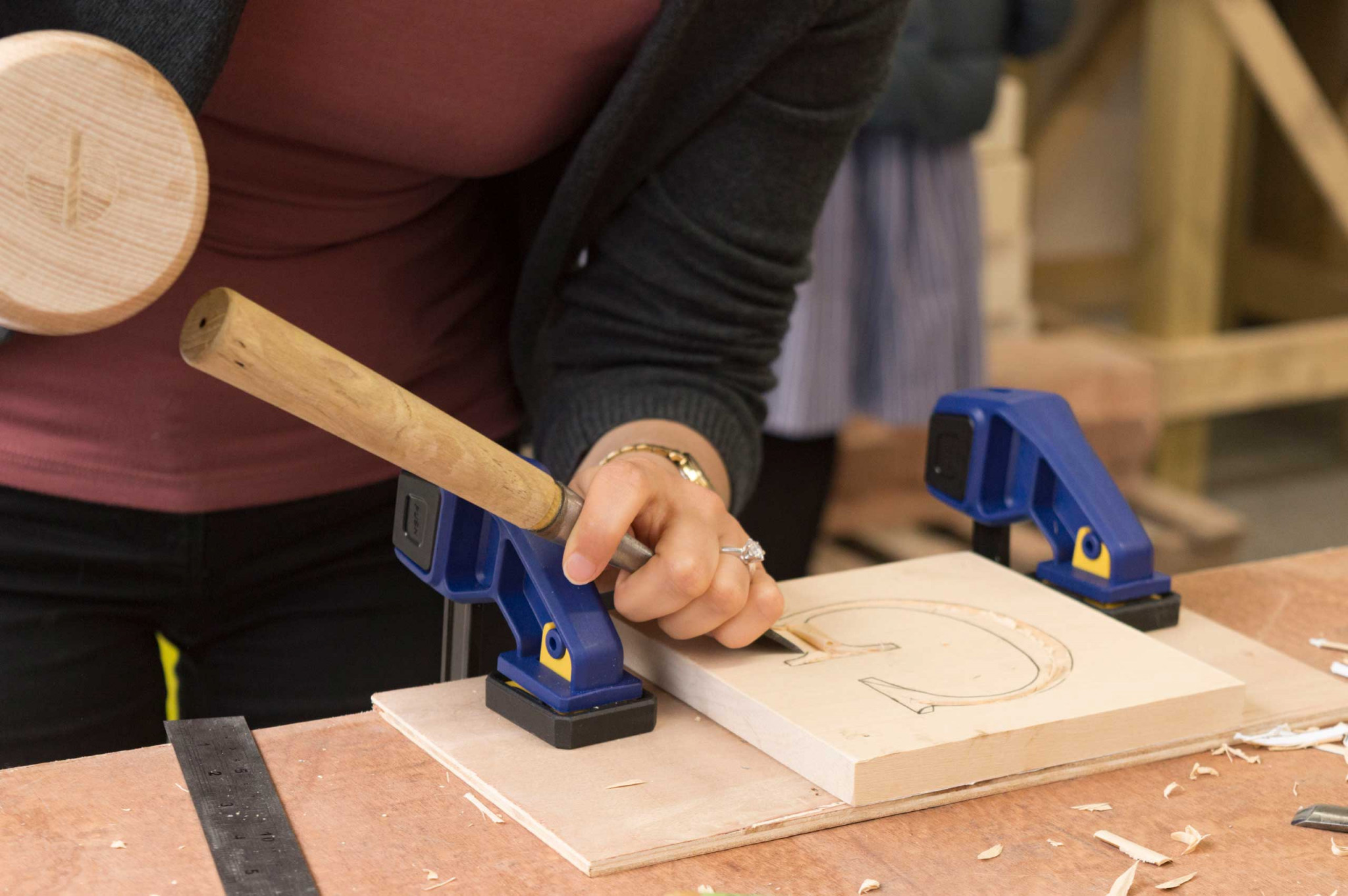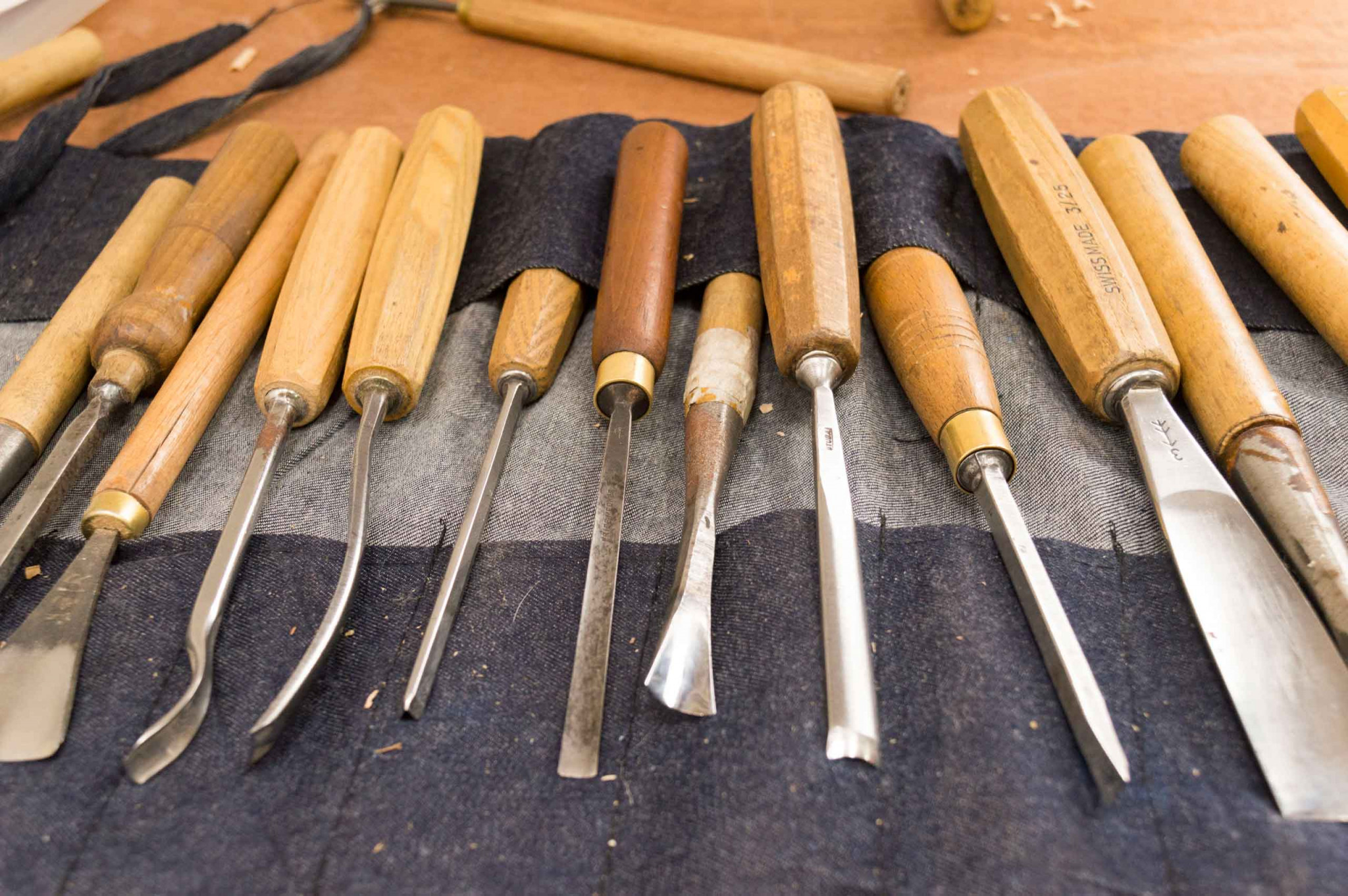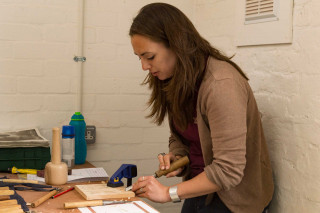Journal 25 June 2019
Wood Carving with Building Craft alumna Sarah Goss
Building Craft alumna shares her insight into the heritage craft of wood carving and its modern-day uses
How did you get into wood carving? What sparked your interest?
I've always had a keen interest in historic buildings and was fortunate to get on the Restoration and Decorative Studies at Portsmouth University before they ended the course. We were the last year to take it. This is where we were taught the traditional methods of different crafts, including carving, decorative plasterwork, scagliola and faux finishing. I specialised in plasterwork and woodcarving in my final year and once graduated decided to continue with the woodcarving as it had hardly any setup costs and was more suited to being a 'one-man-band'.

How did you become involved with The Prince's Foundation?
In 2014 I'd reached a point where I was very aware that I needed to improve my skills in order to continue with carving as a career. I was taught the very basics of woodcarving at university and therefore had to learn on the job a lot when I became self-employed. I really needed to up my game in order to afford new equipment and a proper workshop. I had contacted what felt like every heritage organisation going but to no avail. My mum suggested contacting the Prince's Foundation, which I did, asking about any grants etc. Edith (who then organised the Building Craft Apprenticeship) got back to me and suggested I applied as the deadline was about a week away. The course looked perfect for me as it wasn't designed for beginners and it would provide an opportunity to have some work placements with master carvers around the country. I got in and never looked back. Since then I've improved my skills and my portfolio and I'm now able to take on much more challenging and rewarding commissions.
The Prince's Foundation has since asked me back to run some letter carving workshops as part of London Craft Week and it keeps alumni aware of any free courses or work vacancies that are sent their way. I've found them to be very good at making you aware of lots of different opportunities within the heritage sector after you've left the course which is when you most need it.
How is wood carving used in the modern world?
When I went self-employed I envisaged doing mainly restoration work but in fact, I spend most of my time carving new pieces. Sometimes inspired by traditional design but sometimes very modern. It's an incredibly versatile craft which is why I never get bored. There's a lot of personalisation of pieces which is always lovely to do as it turns an ordinary object into something very special. As well as a lot of lettering I also do small scale sculptures, decorative pieces, architectural details and coats of arms. I'm fortunate in that my customers more often than not have an idea in mind and it's my job to bring it to fruition, and if they're struggling I offer a design service as well.

What has been your most challenging project?
There have been a few challenging commissions over the years and for different reasons. Many years ago when I was just starting up I was asked to carve a mother and child sculpture into a tree trunk in which there wasn't any obvious space to make the carving. It had a lot of burrs and so it was a challenge to actually work out where the carving was going to go in the first place. I got there eventually but with a very basic tool collection, it was very tough going and time-consuming to remove large amounts of wood. Looking back I probably should have got a chainsaw carver in to get the basic shape prepared for me, would have saved weeks of work.
Last year I created two large corbels as part of an exterior door canopy which was being restored. They were both 2 1/2 feet long and I had a very tight deadline on them. I ended working 11 hour days and 7 day weeks to get them done but got there eventually. In 10 years I've never missed a deadline so I wasn't about to start then. One thing I've learnt over the years is that things always take longer than you estimate!





